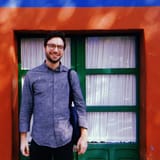Sunset Park Bank Seeks Approval for Millions in Subsidized Deposits for Increased Financial Services
Popular Bank is seeking to create a Banking Development District (BDD) that would give them millions in public deposits in exchange for offering services for vulnerable populations.

The Popular Bank branch in Sunset Park. (Image: Google Maps)
A Sunset Park bank branch is seeking approval for a state program that would give them millions in public deposits in exchange for offering services for vulnerable populations.
The local branch of Popular Bank is applying to create a Banking Development District (BDD), a state designation designed to encourage the establishment of bank branches in areas with a need for banking services, or to keep existing branches afloat.
In this instance, the branch in question is far from new—Popular Bank, which is headquartered in Puerto Rico, has been operating in Sunset Park since 1970. But the branch plans to move this weekend from its current location at 5216 Fifth Avenue to a new space several blocks north, at 4502 5th avenue.
That site was previously home to a branch of Amalgamated Bank, which also participated in the program.
If approved, the Popular Bank branch could receive as much as $20 million in public, subsidized deposits from the state and city. In exchange, it proposes to offer a host of community services, including financial literacy courses in English and Spanish, programs to improve customers’ credit scores, and initiatives to increase access to mortgages and home equity.
“We would work with you and collaborate with the community board and other local leaders to educate people within the community,” John Funero, a senior vice president at Popular Bank, said during a presentation given Tuesday night during a virtual meeting of Brooklyn Community Board 7’s Economic Development/Waterfront Committee.
“Especially the low to moderate income people, to try to help the underbanked become banked. And to also improve their credit ratings so that as the area begins to gentrify, they are not displaced.”
The BDD would encompass a large swath of the neighborhood stretching from 5th Avenue to Fort Hamilton Parkway between 37th and 52nd Streets. To maintain its participation in the program, the branch, which currently holds about $42 million in consumer and business deposits, will need to demonstrate that it’s providing services to residents within those boundaries.
There are currently 31 BDDs already established in New York City, including ten in Brooklyn. Popular Bank, which has 28 branches in New York City, has previously been to create BDDs in four other locations: Brownsville in Brooklyn, East Tremont in the Bronx, and the Lower East Side in Manhattan. The bank must periodically apply to renew the designation.
To gain approval for the proposed district in Sunset Park, Popular Bank will have to demonstrate “not only that the community is in serious need of banking services, but also that this need is not being met by existing nearby financial institutions.”
Popular Bank did not present such data at the Community Board hearing. A study by the Urban Institute estimated that, in 2013, about 12.2% of residents of the larger Sunset Park area were unbanked, meaning they did not use banking services at all, compared to 11.7% citywide.
23% of the neighborhood’s residents were characterized as underbanked, meaning they make use of both formal and informal financial services, compared to about 25% citywide.
Google Maps, meanwhile, shows a smattering of bank branches within the proposed BDD area.
The bank’s application will ultimately be approved by the state’s Department of Financial Services, but the agency instructs applicants to obtain approval from local community boards and borough presidents as well.
Committee members generally responded positively to the proposal, though they expressed concern that the proposed set-aside for new residential mortgages—$750,000—was far too small.
“If you are aware of what apartment prices are or house prices are in the district, that’s two people or three people in terms of loan amounts,” said committee member Nick Azadian.
Ultimately, the committee voted unanimously to approve the proposal with conditions including an increase in the proposed mortgage and business loan amounts; a stipulation that the bank regularly report back to the community on the program’s impact; and a provision that encourages the bank to support nonprofit housing development.
“We should feel free to ask for a lot and see what we get, within reason,” committee chair Daniel Murphy said.




